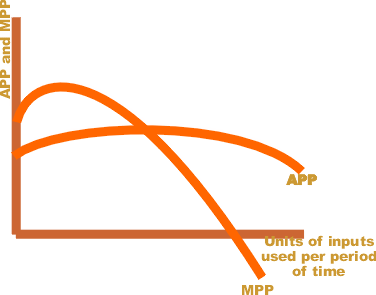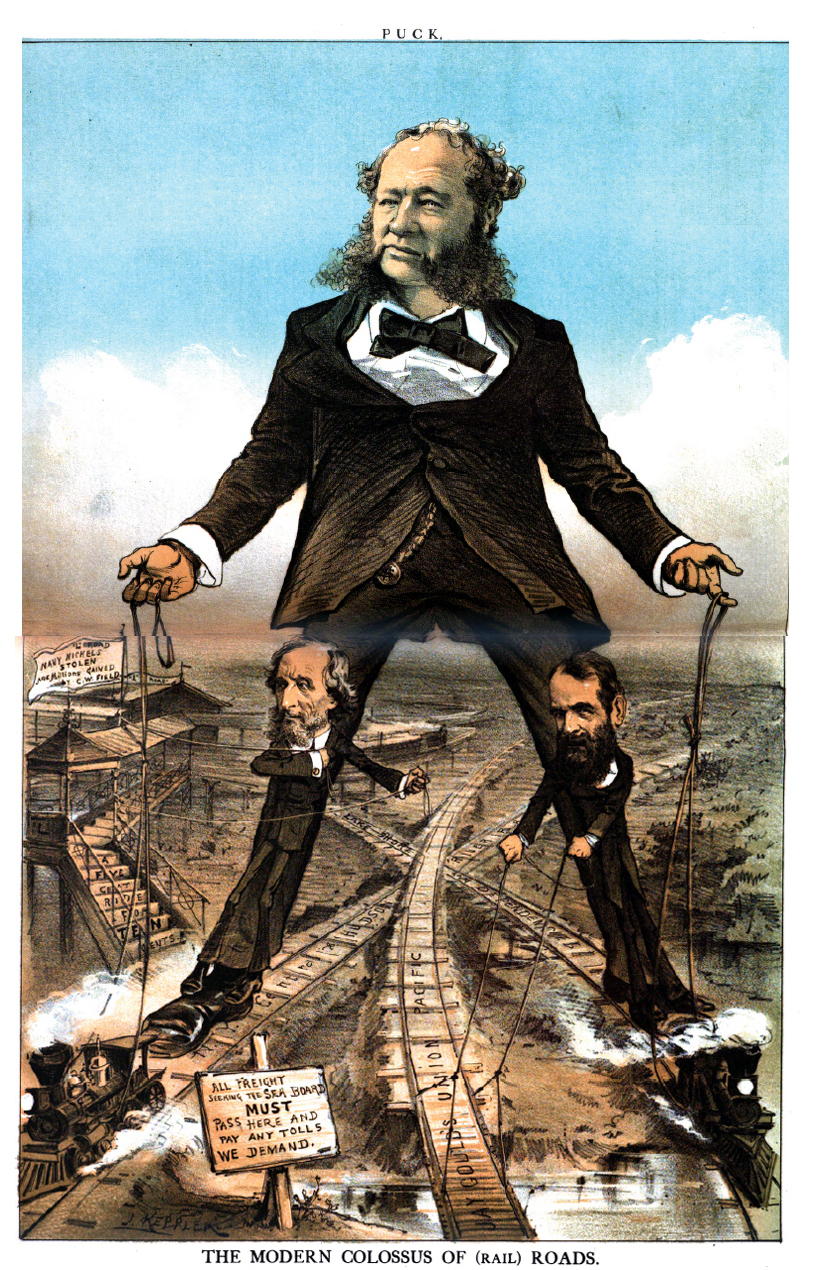|
Marginal Revenue Productivity Theory Of Wages
The marginal revenue productivity theory of wages is a model of wage levels in which they set to match to the marginal revenue product of labor, MRP (the value of the marginal product of labor), which is the increment to revenues caused by the increment to output produced by the last laborer employed. In a model, this is justified by an assumption that the firm is profit-maximizing and thus would employ labor only up to the point that marginal labor costs equal the marginal revenue generated for the firm.Daniel S. Hamermesh. 1986. The demand for labor in the long run. ''Handbook of Labor Economics'' (Orley Ashenfelter and Richard Layard, ed.) p. 429. This is a model of the neoclassical economics type. The marginal revenue product (MRP) of a worker is equal to the product of the marginal product of labour (MP) (the increment to output from an increment to labor used) and the marginal revenue (MR) (the increment to sales revenue from an increment to output): MRP = MP \times MR. The t ... [...More Info...] [...Related Items...] OR: [Wikipedia] [Google] [Baidu] |
Wage
A wage is payment made by an employer to an employee for work (human activity), work done in a specific period of time. Some examples of wage payments include wiktionary:compensatory, compensatory payments such as ''minimum wage'', ''prevailing wage'', and ''yearly bonuses,'' and wiktionary:remunerative, remunerative payments such as ''prizes'' and ''tip payouts.'' Wages are part of the expenses that are involved in running a business. It is an obligation to the employee regardless of the profitability of the company. Payment by wage contrasts with salary, salaried work, in which the employer pays an arranged amount at steady intervals (such as a week or month) regardless of hours worked, with Commission (remuneration), commission which conditions pay on individual performance, and with compensation based on the performance of the company as a whole. Waged employees may also receive tips or gratuity paid directly by clients and employee benefits which are non-monetary forms of ... [...More Info...] [...Related Items...] OR: [Wikipedia] [Google] [Baidu] |
Labour (economics)
Labour economics seeks to understand the functioning and dynamics of the Market (economics), markets for wage labour. Labour (human activity), Labour is a commodity that is supplied by labourers, usually in exchange for a wage paid by demanding firms. Because these labourers exist as parts of a social, institutional, or political system, labour economics must also account for social, cultural and political variables. Labour markets or job markets function through the interaction of workers and employers. Labour economics looks at the suppliers of labour services (workers) and the demanders of labour services (employers), and attempts to understand the resulting pattern of wages, employment, and income. These patterns exist because each individual in the market is presumed to make rational choices based on the information that they know regarding wage, desire to provide labour, and desire for leisure. Labour markets are normally geographically bounded, but the rise of the internet ... [...More Info...] [...Related Items...] OR: [Wikipedia] [Google] [Baidu] |
Marginal Product
In economics and in particular neoclassical economics, the marginal product or marginal physical productivity of an input (factor of production) is the change in output resulting from employing one more unit of a particular input (for instance, the change in output when a firm's labor is increased from five to six units), assuming that the quantities of other inputs are kept constant. The marginal product of a given input can be expressed as: :MP = \frac where \Delta X is the change in the firm's use of the input (conventionally a one-unit change) and \Delta Y is the change in the quantity of output produced (resulting from the change in the input). Note that the quantity Y of the "product" is typically defined ignoring external costs and benefits. If the output and the input are infinitely divisible, so the marginal "units" are infinitesimal, the marginal product is the mathematical derivative of the production function with respect to that input. Suppose a firm's output ''Y ... [...More Info...] [...Related Items...] OR: [Wikipedia] [Google] [Baidu] |
Neoclassical Economics
Neoclassical economics is an approach to economics in which the production, consumption, and valuation (pricing) of goods and services are observed as driven by the supply and demand model. According to this line of thought, the value of a good or service is determined through a hypothetical maximization of utility by income-constrained individuals and of profits by firms facing production costs and employing available information and factors of production. This approach has often been justified by appealing to rational choice theory. Neoclassical economics is the dominant approach to microeconomics and, together with Keynesian economics, formed the neoclassical synthesis which dominated mainstream economics as "neo-Keynesian economics" from the 1950s onward. Classification The term was originally introduced by Thorstein Veblen in his 1900 article "Preconceptions of Economic Science", in which he related marginalists in the tradition of Alfred Marshall ''et al.'' to ... [...More Info...] [...Related Items...] OR: [Wikipedia] [Google] [Baidu] |
John Bates Clark
John Bates Clark (January 26, 1847 – March 21, 1938) was an American neoclassical economist. He was one of the pioneers of the marginalist revolution and opponent to the Institutionalist school of economics, and spent most of his career as a professor at Columbia University. He was one of the most prominent American economists of his time. Biography Clark was born and raised in Providence, Rhode Island, and graduated from Amherst College, in Massachusetts, at the age of 25. From 1872 to 1875, he attended the University of Zurich and the University of Heidelberg where he studied under Karl Knies (a leader of the German Historical School). He taught as a professor of economics at Carleton College from 1875 to 1881 before moving east to teach at Smith College. He subsequently taught at Amherst College, Johns Hopkins University, and Columbia University. Early in his career Clark's writings reflected his German Socialist background and showed him as a critic of capitalism. Durin ... [...More Info...] [...Related Items...] OR: [Wikipedia] [Google] [Baidu] |
Knut Wicksell
Johan Gustaf Knut Wicksell (December 20, 1851 – May 3, 1926) was a Swedish economist of the Stockholm school. He was professor at Uppsala University and Lund University. He made contributions to theories of population, value, capital and money, as well as methodological contributions to econometrics. His economic contributions would influence both the Keynesian and Austrian schools of economic thought. He was married to the noted feminist Anna Bugge. Early life Wicksell was born in Stockholm on December 20, 1851. His father was a relatively successful businessman and real estate broker. He lost both his parents at a relatively early age. His mother died when he was only six, and his father died when he was fifteen. His father's considerable estate allowed him to enroll at the University of Uppsala in 1869 to study mathematics, astronomy and physics. Education He received his first degree in two years, and he engaged in graduate studies until 1885, when he received his ... [...More Info...] [...Related Items...] OR: [Wikipedia] [Google] [Baidu] |
Perfect Competition
In economics, specifically general equilibrium theory, a perfect market, also known as an atomistic market, is defined by several idealizing conditions, collectively called perfect competition, or atomistic competition. In Economic model, theoretical models where conditions of perfect competition hold, it has been demonstrated that a Market (economics), market will reach an Economic equilibrium, equilibrium in which the quantity supplied for every Goods and services, product or service, including Workforce, labor, equals the quantity demanded at the current price. This equilibrium would be a Pareto optimum. Perfect competition provides both allocative efficiency and productive efficiency: * Such markets are ''allocatively efficient'', as output will always occur where marginal cost is equal to average revenue i.e. price (MC = AR). In perfect competition, any Profit maximization, profit-maximizing producer faces a market price equal to its marginal cost (P = MC). This implies that ... [...More Info...] [...Related Items...] OR: [Wikipedia] [Google] [Baidu] |
Price Taker
In economics, market power refers to the ability of a firm to influence the price at which it sells a product or service by manipulating either the supply or demand of the product or service to increase economic profit. In other words, market power occurs if a firm does not face a perfectly elastic demand curve and can set its price (P) above marginal cost (MC) without losing revenue. This indicates that the magnitude of market power is associated with the gap between P and MC at a firm's profit maximising level of output. The size of the gap, which encapsulates the firm's level of market dominance, is determined by the residual demand curve's form. A steeper reverse demand indicates higher earnings and more dominance in the market. Such propensities contradict perfectly competitive markets, where market participants have no market power, P = MC and firms earn zero economic profit. Market participants in perfectly competitive markets are consequently referred to as 'price takers', ... [...More Info...] [...Related Items...] OR: [Wikipedia] [Google] [Baidu] |
Demand Curve
A demand curve is a graph depicting the inverse demand function, a relationship between the price of a certain commodity (the ''y''-axis) and the quantity of that commodity that is demanded at that price (the ''x''-axis). Demand curves can be used either for the price-quantity relationship for an individual consumer (an individual demand curve), or for all consumers in a particular market (a market demand curve). It is generally assumed that demand curves slope down, as shown in the adjacent image. This is because of the law of demand: for most goods, the quantity demanded falls if the price rises. Certain unusual situations do not follow this law. These include Veblen goods, Giffen goods, and speculative bubbles where buyers are attracted to a commodity if its price rises. Demand curves are used to estimate behaviour in competitive markets and are often combined with supply curves to find the equilibrium price (the price at which sellers together are willing to sell the ... [...More Info...] [...Related Items...] OR: [Wikipedia] [Google] [Baidu] |
Monopoly
A monopoly (from Greek language, Greek and ) is a market in which one person or company is the only supplier of a particular good or service. A monopoly is characterized by a lack of economic Competition (economics), competition to produce a particular thing, a lack of viable substitute goods, and the possibility of a high monopoly price well above the seller's marginal cost that leads to a high monopoly profit. The verb ''monopolise'' or ''monopolize'' refers to the ''process'' by which a company gains the ability to raise prices or exclude competitors. In economics, a monopoly is a single seller. In law, a monopoly is a business entity that has significant market power, that is, the power to charge Monopoly price, overly high prices, which is associated with unfair price raises. Although monopolies may be big businesses, size is not a characteristic of a monopoly. A small business may still have the power to raise prices in a small industry (or market). A monopoly may als ... [...More Info...] [...Related Items...] OR: [Wikipedia] [Google] [Baidu] |
Imperfect Competition
In economics, imperfect competition refers to a situation where the characteristics of an economic market do not fulfil all the necessary conditions of a perfectly competitive market. Imperfect competition causes market inefficiencies, resulting in market failure. Imperfect competition usually describes behaviour of suppliers in a market, such that the level of competition between sellers is below the level of competition in perfectly competitive market conditions. The competitive structure of a market can significantly impact the financial performance and conduct of the firms competing within it. There is a causal relationship between competitive structure, behaviour and performance paradigm. Market structure can be determined by measuring the degree of suppliers' market concentration, which in turn reveals the nature of market competition. The degree of market power refers to firms' ability to affect the price of a good and thus, raise the market price of the good or service abov ... [...More Info...] [...Related Items...] OR: [Wikipedia] [Google] [Baidu] |
Microeconomic Theories
Microeconomics is a branch of economics that studies the behavior of individuals and firms in making decisions regarding the allocation of scarce resources and the interactions among these individuals and firms. Microeconomics focuses on the study of individual markets, sectors, or industries as opposed to the economy as a whole, which is studied in macroeconomics. One goal of microeconomics is to analyze the market mechanisms that establish relative prices among goods and services and allocate limited resources among alternative uses. Microeconomics shows conditions under which free markets lead to desirable allocations. It also analyzes market failure, where markets fail to produce efficient results. While microeconomics focuses on firms and individuals, macroeconomics focuses on the total of economic activity, dealing with the issues of growth, inflation, and unemployment—and with national policies relating to these issues. Microeconomics also deals with the effects ... [...More Info...] [...Related Items...] OR: [Wikipedia] [Google] [Baidu] |






